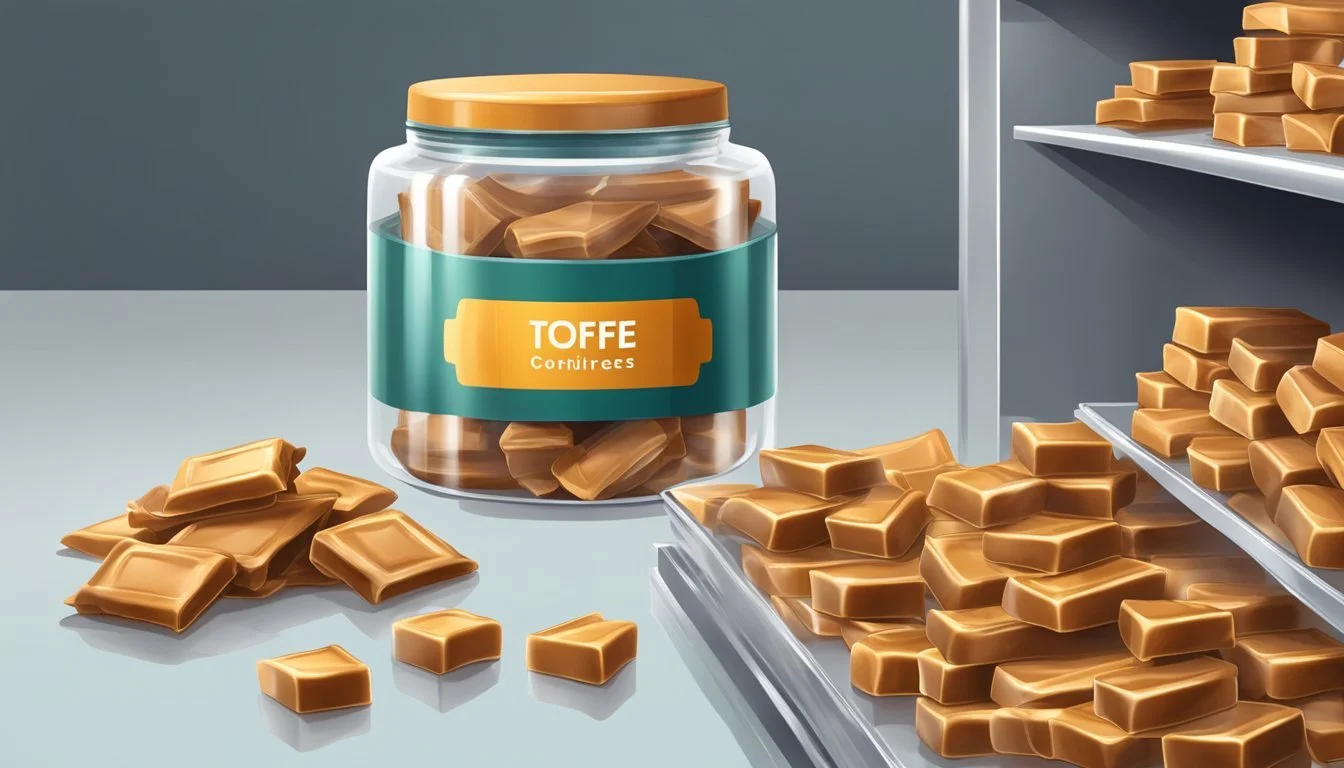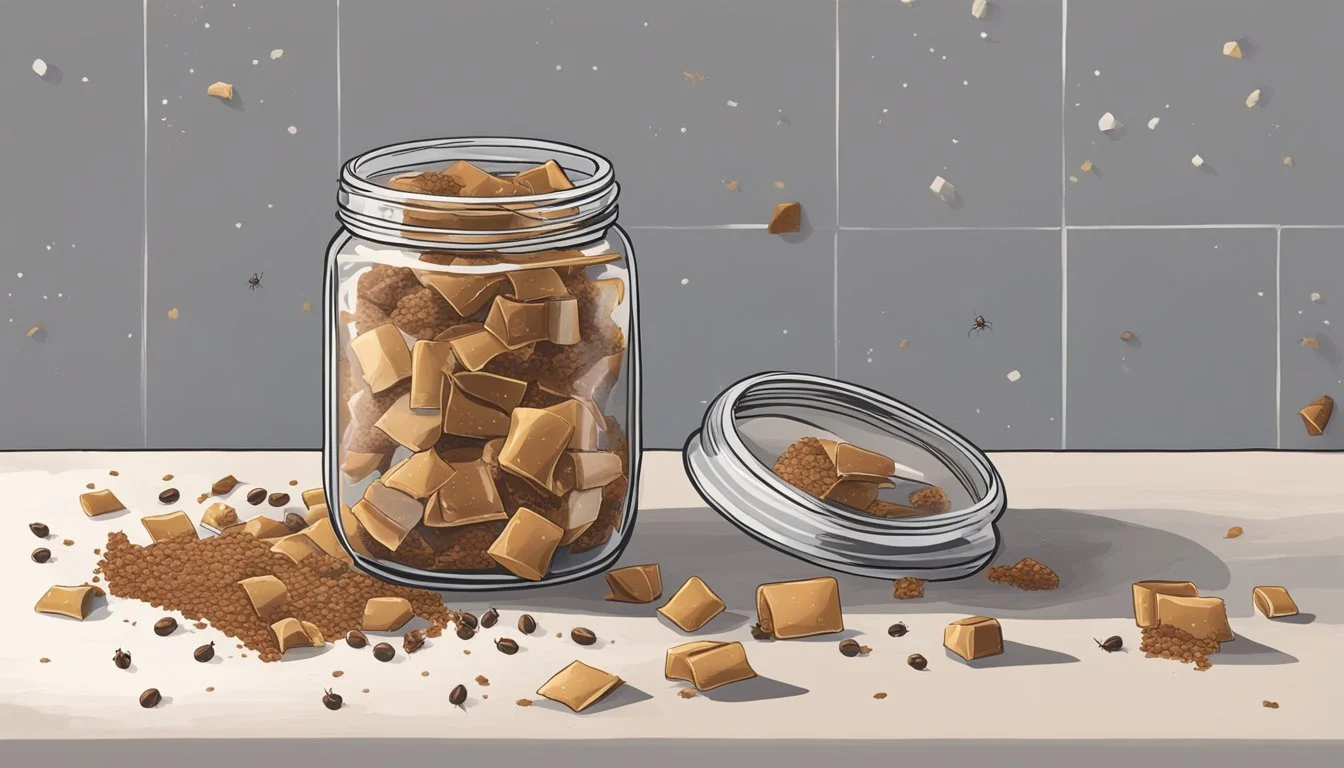Does Toffee Go Bad?
Understanding Its Shelf Life
Toffee, a beloved confection known for its rich flavor and crisp texture, often raises questions about its longevity and storage. Toffee can indeed go bad, but when stored correctly, it has an impressive shelf life. Homemade toffee lasts up to four weeks at room temperature, three months in the fridge, and a year in the freezer. Store-bought toffee, when unopened, also lasts around a month at room temperature.
The texture and flavor of toffee are critical markers of its freshness. Over time, if toffee is not stored correctly, the fats in the butter can turn rancid, impacting both its taste and texture. Toffee should be kept in an airtight container, ideally lined with wax paper, to maintain its crispness and prevent moisture from causing it to become sticky or chewy.
Proper storage extends toffee's delicious qualities, allowing fans to enjoy this sweet treat far longer than many other confections. Whether homemade or store-bought, understanding the best practices for storing toffee can help in preserving its coveted texture and delightful flavor.
Understanding Toffee
Toffee is a popular confection known for its rich flavor and delightful crunch. Key aspects to consider include its primary ingredients, the various types available, and the importance of butterfat content in achieving the desired texture and taste.
Key Ingredients
Toffee primarily consists of sugar and butter. The process involves boiling sugar and butter together until they reach a specific temperature, resulting in a caramelized, crunchy candy. Depending on the recipe, additional ingredients like nuts or chocolate can be added for extra flavor and texture.
Basic Ingredients:
Sugar: Provides sweetness and caramelization.
Butter: Adds richness and contributes to the toffee’s texture.
Optional: Nuts (e.g., almonds, pecans) and chocolate are often added for variety.
Toffee Varieties
There are several types of toffee, each with unique characteristics. English toffee typically includes a topping of nuts and chocolate, offering a rich, layered taste. Cinder toffee, also known as honeycomb toffee, has a light and airy texture created by adding baking soda to the mixture.
Common Varieties:
English Toffee: Often topped with nuts and chocolate.
Cinder Toffee: Light, airy texture, sometimes called honeycomb toffee.
Butterfat Content and Quality
The butterfat content in toffee plays a crucial role in its final quality. High-quality butter with a high butterfat content yields a richer, more flavorful toffee. The butterfat contributes to the smoothness and richness, preventing the toffee from becoming too hard or brittle.
Butters with lower water content and higher butterfat are preferred for making toffee. The quality of the butter directly impacts the overall flavor and texture of the final product.
Important Points:
High Butterfat: Ensures a rich, smooth texture.
Quality Butter: Enhances overall flavor and consistency.
Toffee Shelf Life
The shelf life of toffee depends on several factors such as ingredients, storage conditions, and whether it is homemade or store-bought. Understanding these aspects can help maximize its longevity.
Factors Affecting Freshness
Ingredients
The type of ingredients used in toffee can heavily influence its shelf life. Traditional recipes with sugar, butter, and salt tend to last longer. Additions like nuts or chocolate might introduce moisture, which can shorten the shelf life.
Homemade vs. Store-Bought
Store-bought toffee is often made under controlled conditions and may include preservatives, allowing it to last longer. Homemade toffee, lacking these preservatives, usually has a shorter shelf life.
Storage Conditions
Toffee should be stored in a cool, dry place. Room temperature is ideal for short-term storage, while refrigeration can extend its life. Freezing toffee is an option for long-term storage; however, low temperatures may alter its texture.
Signs of Expired Toffee
Changes in Texture
Fresh toffee should be hard and brittle. If it becomes soft or sticky, it may have absorbed moisture, indicating it is starting to go bad.
Appearance
Check for signs of mold or discoloration. Any change in color, especially towards darker shades, can suggest spoilage.
Taste
A stale or off taste is a clear indicator that toffee has passed its prime. Fresh toffee should taste sweet and buttery without bitterness or a rancid aftertaste.
Smell
A fresh toffee has a pleasant, sugary aroma. An expired toffee may have a musty or sour smell, indicating it is no longer safe to eat.
Proper Storage Techniques
Storing toffee correctly can extend its shelf life and maintain its delicious taste. The key points involve room temperature storage, refrigeration/freezing, and securing it in airtight containers.
Room Temperature Storage
Toffee stored at room temperature should be kept in a cool, dry place. Homemade toffee can last up to four weeks at room temperature if stored properly. The ideal method involves wrapping individual pieces in waxed paper or parchment paper to prevent them from sticking together.
Store these wrapped pieces in an airtight container. Avoid direct sunlight and heat sources as these can cause the toffee to melt or become sticky.
Refrigeration and Freezing
Refrigerating toffee can significantly prolong its freshness. Homemade toffee can last two months in the refrigerator when stored correctly. It is essential to use airtight containers to avoid moisture from the fridge affecting the texture.
Freezing is even more effective; toffee can last up to six months when frozen. Place the toffee in a freezer-safe airtight container, separating layers with waxed paper or parchment. This method helps preserve the taste and texture for an extended period.
Airtight Containers and Packaging
The choice of an airtight container is crucial in maintaining the toffee’s quality. Glass containers with sealed lids or high-quality plastic containers are best. Ensure there is minimal air inside the container before sealing to reduce the risk of moisture.
Wrapping toffee in waxed paper or parchment paper before placing it in the container helps protect it from sticking and ensures easy separation when needed. Proper packaging prevents exposure to elements that could degrade the toffee’s quality over time.
Homemade Toffee Tips
Crafting homemade toffee requires attention to detail, particularly in cooking techniques and managing texture to avoid crystallization. Properly controlling heat and using the right ingredients are key.
Cooking Techniques
Successfully making toffee involves precise temperature control. Start by melting butter and sugar over medium-low heat until the butter is fully melted. Avoid high heat initially to prevent burning and uneven mixing.
Once melted, increase the heat to medium. Cook until the mixture reaches a dark golden color and registers 300°F on a candy thermometer. This stage is crucial to achieve the right consistency. Stirring continuously helps maintain an even temperature and prevents burning.
Using a reliable candy thermometer ensures accuracy. Pour the cooked toffee onto a parchment paper-lined tray. Spread it thinly for even cooling and consistency.
Texture and Crystallization
Achieving the desired texture in toffee involves preventing unwanted crystallization. Use fresh ingredients like unsalted butter and granulated sugar. Old ingredients can contribute to crystallization issues.
Corn syrup or cream of tartar can be added in small amounts to inhibit crystallization. These ingredients help maintain a smooth and glossy texture by interfering with sugar crystal formation.
Stirring too vigorously or inconsistently can introduce air bubbles and create a grainy texture. Stir in a gentle, steady manner throughout the cooking process for the best results.
Cooling the toffee quickly on a parchment-lined tray and adding melted chocolate or cocoa powder helps maintain its texture and prevents crystallization. Proper cooling is crucial for a smooth finish.
Extending the Life of Toffee
Proper storage techniques can significantly extend the life of toffee, ensuring it remains fresh and delightful. Various methods, such as refrigeration and freezing, are discussed below, along with best practices for dealing with leftovers.
Can You Freeze Toffee?
Yes, toffee can be frozen to extend its shelf life. Freezing toffee helps preserve its texture and flavor for longer periods. To freeze toffee, layer pieces in an airtight container, placing wax paper between layers to prevent sticking.
Store the container in the freezer, and toffee can last up to a month. When ready to enjoy, allow it to thaw at room temperature. This process helps prevent condensation from making the toffee sticky. Freezing is particularly useful when you want to enjoy homemade or store-bought toffee over several weeks.
Best Practices for Leftovers
For leftover toffee, store it in a cool, dry place within an airtight container to maintain its quality. To store at room temperature, ensure the container is vacuum-sealed. This method keeps the toffee fresh for 1 to 2 weeks.
If you prefer refrigeration, place the toffee in an airtight container to protect it from moisture. The fridge can extend its freshness, but it must be carefully sealed to avoid condensation. Keeping toffee in the refrigerator can prolong its life and maintain its texture and flavor.
By following these practices, you can keep your toffee delicious for longer periods, reducing waste and enhancing enjoyment.
Toffee as Gifts and Treats
Toffee is a classic choice for gifts and treats due to its rich flavor and versatile presentation. When considering toffee for gifting or serving at events, there are key points to keep in mind.
Gifting Considerations
Toffee makes an excellent gift owing to its long shelf life and delightful taste. Presentation is crucial; packaging toffee in decorative tins or boxes, separated by waxed paper, enhances its appeal. Adding nuts or a sprinkle of salt can elevate the flavor profile.
It is essential to store toffee properly to maintain its quality. Airtight containers are best, kept in a cool, dry place to prevent stickiness.
Personalizing toffee gifts by adding customized labels or messages can make the gift extra special.
Serving Suggestions
When serving toffee as treats, consider both individual portions and display methods. Small, neatly cut pieces are perfect for dessert tables and can be paired with other treats like cakes or ice cream.
Adding toffee bits to baked goods such as brownies or cookies can create a delightful, crunchy surprise.
Toffee pairs well with beverages like hot chocolate or coffee, offering a rich, sweet accompaniment.
Serving toffee in small bowls or arranged on platters can make it easy for guests to enjoy.
By focusing on proper presentation and complementary pairings, toffee can be a hit at any gathering.
Impact of Environment on Toffee
The environment plays a significant role in the longevity and quality of toffee. Important factors include temperature and humidity levels, which can affect the texture and shelf life.
Temperature and Humidity
Temperature and humidity greatly influence toffee's quality. At room temperature, toffee can last around one month if store-bought and unopened, but only about two weeks once opened. Homemade toffee lasts for about four weeks.
Humidity affects toffee by increasing its stickiness or causing it to become rock-hard. High humidity levels should be avoided to prevent moisture absorption, which leads to spoilage.
Refrigeration extends the shelf life. Toffee can last up to three months in a refrigerator and a year in the freezer. However, it must be stored in airtight containers to prevent moisture absorption.
A dehumidifier can help in areas with high humidity to maintain toffee’s optimal texture and quality. Using a candy thermometer during preparation ensures that the toffee reaches the right temperature to set properly, further enhancing its durability.









